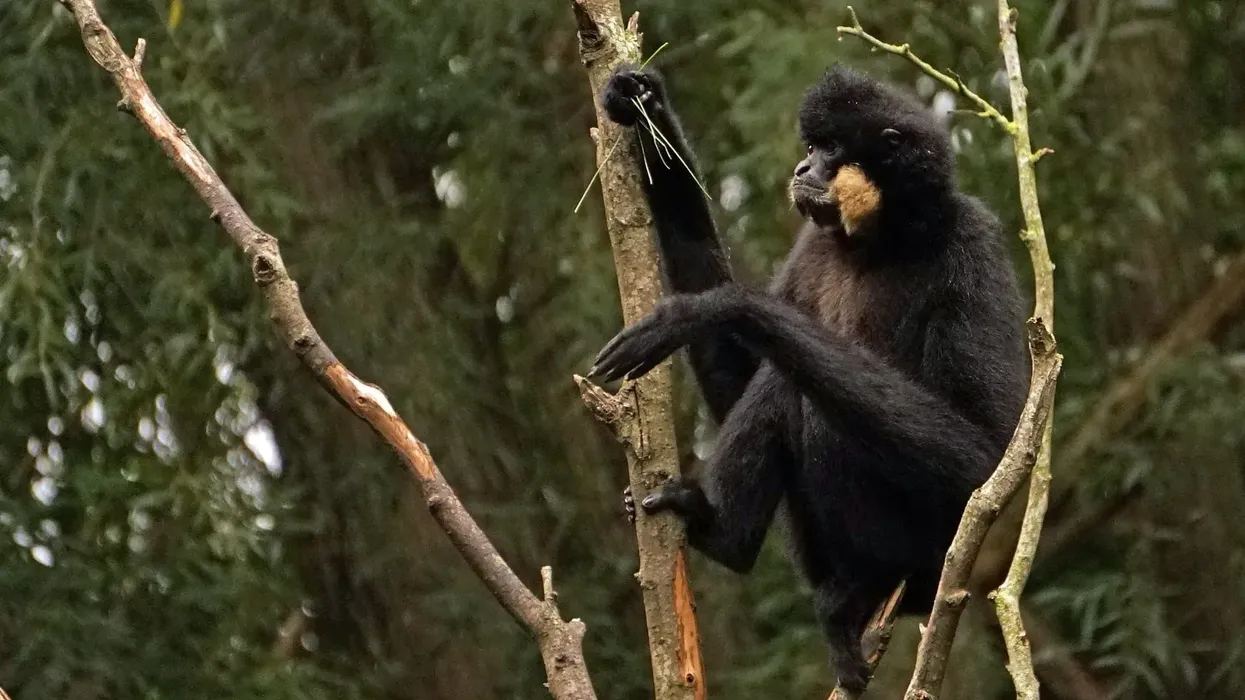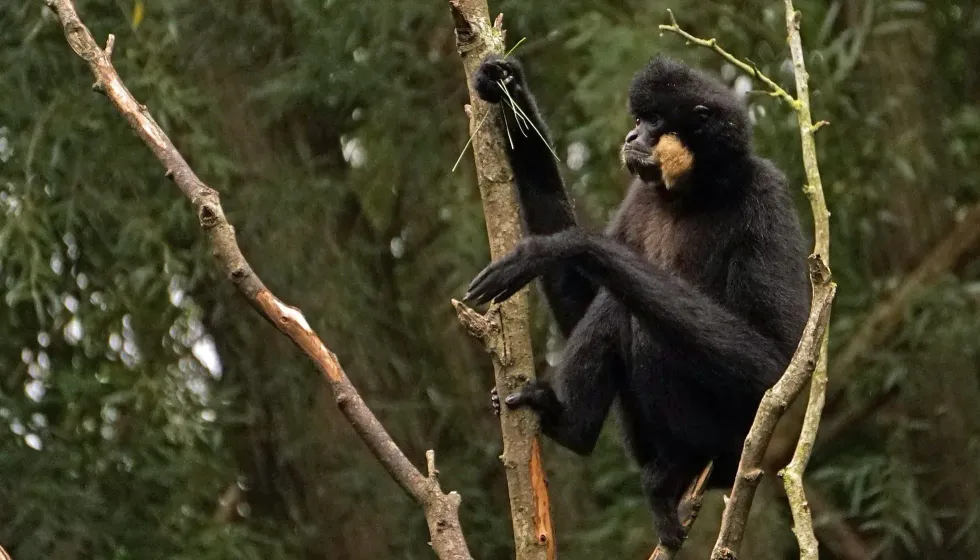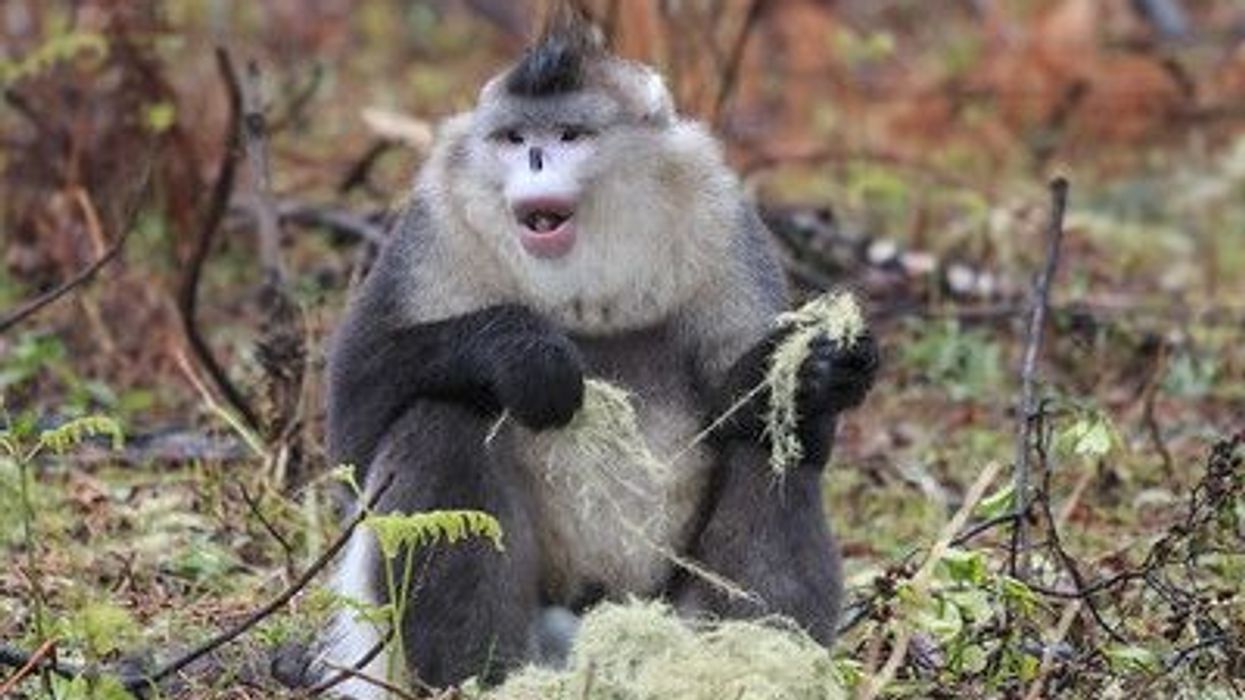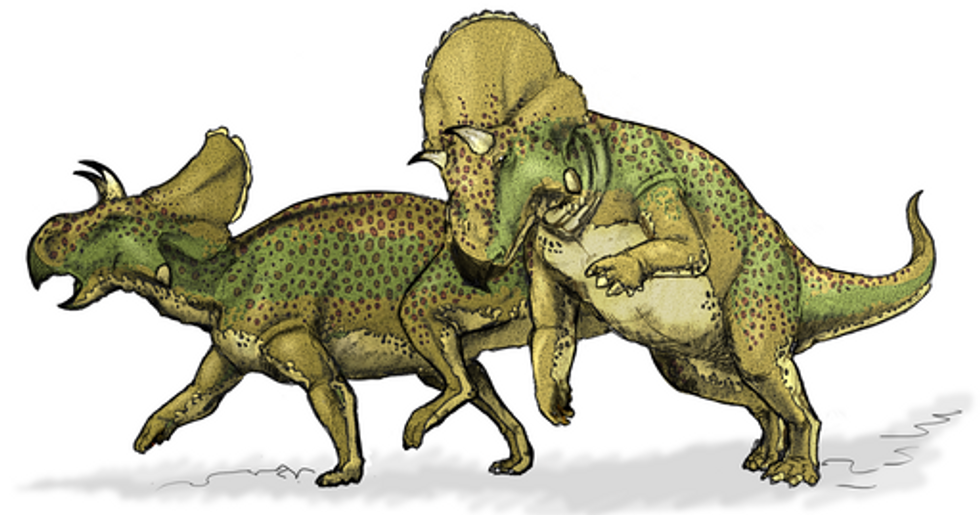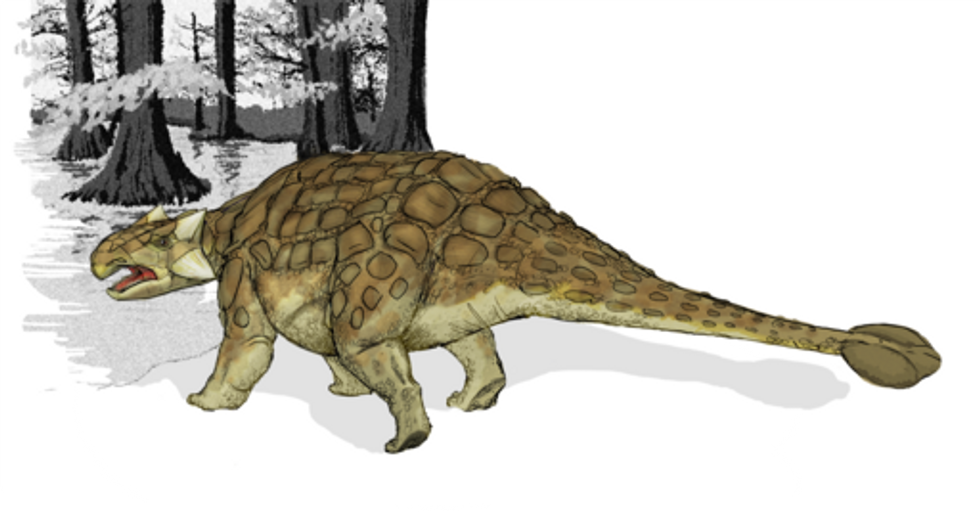The yellow-cheeked gibbon (Nomascus gabriellae) is a primate species that has many other common names, such as red-cheeked gibbon, gold-cheeked gibbon, buff-cheeked-gibbon, golden-crested gibbon, and yellow-cheeked crested gibbon. It is a member of the Hylobatidae family and the genus Nomascus.
This species is indigenous to Laos, Cambodia, and Vietnam.
It is an arboreal and diurnal species that can be seen inhabiting tropical evergreen forests. It uses brachiation to move from tree to tree and this species is threatened currently due to habitat loss, heavy use of herbicides and defoliants, and killing for meat or traditional medicines
This species ranges between 24-31 in (60.9–78.7 cm) in length and between 15-24 lb (6.8–10.8 kg) in weight. The yellow-cheeked gibbon is blonde at birth but becomes black as it attains maturity.
The male has this coloration for its entire life, along with golden-colored cheeks. The female is blonde at birth so that it can camouflage with the fur of the mother. She turns black later on, but then turns blond again when she attains sexual maturity.
An adult female of this species is blonde overall, with a black-colored cap on the top of her head. Keep reading to get to know fun facts about the typical yellow-cheeked gibbon diet, habitat, appearance, and more!
If you enjoyed reading our fun facts about the yellow-cheeked gibbon, you must check out our wooly monkey surprising facts and spider monkey facts for kids!
Yellow-cheeked Gibbon Interesting Facts
What type of animal is a yellow-cheeked gibbon?
The yellow-cheeked gibbon (Nomascus gabriellae) is a species of gibbon. It is also known as the red-cheeked gibbon, gold-cheeked gibbon, buff-cheeked-gibbon, golden-crested gibbon, and yellow-cheeked crested gibbon. They belong to the same family as crested gibbons: Hylobatidae.
What class of animal does a yellow-cheeked gibbon belong to?
The yellow cheeked crested gibbon (Nomascus gabriellae) belongs to the class Mammalia. It belongs to the genus Nomascus.
How many yellow-cheeked gibbons are there in the world?
The exact population of these gibbons has not yet been evaluated. However, they face significant threats from habitat loss and the illegal pet trade. These threats have caused a significant decline in the population of this primate species.
Where does a yellow-cheeked gibbon live?
The yellow-cheeked crested gibbon occurs in southeastern Asia. They can be seen in northeast Cambodia, central Vietnam, and southern Laos.
What is a yellow-cheeked gibbon's habitat?
This species is arboreal and does not prefer to walk on the ground or swim in the water. The buff-cheeked gibbon can be seen dwelling in tropical evergreen forests.
It favors lowland forests and isn't normally seen at altitudes over 4921.6-6561.6 ft (1500-2000 m). This species is diurnal and looks for food through brachiation. Brachiation is a manner in which primates like gibbons move from branch to branch in trees by utilizing their arms.
Who do yellow-cheeked gibbons live with?
Red-cheeked gibbons are not sociable with outsiders. They only interact within their small family. A closely-knit family of gibbons engages in social grooming that enhances bonds between members of the family.
How long does a yellow-cheeked gibbon live?
The lifespan of yellow-cheeked gibbons (Nomascus gabriellae) in the wild is currently not known. However, we do know that some gibbons in captivity have lived as long as 46-50 years!
How do they reproduce?
Yellow cheeked crested gibbons are monogamous. In fact, all species of gibbons have nuclear families that comprise one to four young and a breeding couple.
A breeding couple of this species can produce one offspring every two to three years. The interval between two births is this long as females of this species care for their offspring for two years after birth.
These gibbons are known to breed all year round. The gestation period of this species is seven months long and the offspring resides with its family for six to eight years whilst it grows up. This gibbon is born with blond fur at birth and the fur turns black later on.
Both parents care for their offspring, so both male and female gibbons protect, carry and groom their young. The offspring resides with its parents for six to eight years, after which, they establish their own territories to start their own family.
When males attain sexual maturity their fur becomes black. The fur of the females becomes yellow when they attain sexual maturity.
What is their conservation status?
The yellow cheeked crested gibbon is classified as Endangered by the IUCN's Red List. This species is threatened by the illegal pet trade and habitat degradation.
Yellow-cheeked Gibbon Fun Facts
What do yellow-cheeked gibbons look like?
Yellow-cheeked gibbons range between 24-31 in (60.9–78.7 cm) in length. They are quite small and have a unique body shape. Gibbons are often mistaken to be monkeys, but they aren't, as they do not have a tail.
They have long limbs and a small torso to suit their lifestyle in trees. Their hands are hook-shaped and possess four fingers. Their hands help them in grasping branches easily.
Females and males of this gibbon species are about the same size but have completely different colorations. Juveniles don a yellowish-golden coat that becomes black in color as they mature.
The male juvenile retains this black-colored coat throughout his adulthood and develops the characteristic light buff-colored patches on his cheeks, from which the common name of this species originates. These cheek patches start from the eyes and extend to the region just below their mouth.
As female juveniles attain maturity, they shed their black coat. Their new coat has a light pelage coloration, which is browner than that of a juvenile.
A black cap on the top of the head is retained as well as some black fur on the edges of the ears. White fur frames the faces of females and there is a gray hue on the region around the chest as well.

How cute are they?
Red-cheeked gibbons are very cute animals. They are quite interesting to observe and juveniles of this species are especially adorable.
How do they communicate?
Red-cheeked gibbons are quite vocal. Groups of this species have been observed to vocalize at dawn. Their songs also help them in defending their partner, their, food, and their trees and territories. They also aid in attracting suitable mates. Couples are known to duet, with specific phrases for male and female gibbons.
How big is a yellow-cheeked gibbon?
Yellow cheeked crested gibbons range between 24-31 in (60.9–78.7 cm) in length. They are four times bigger than the snowy plover!
How fast can a yellow-cheeked gibbon move?
The speed of the yellow-cheeked gibbon has not been evaluated yet. However, we do know that gibbons can move very fast at a speed of 35 mph (56.3 kph).
How much does a yellow-cheeked gibbon weigh?
Yellow-cheeked gibbons range between 15-24 lb (6.8–10.8 kg) in weight.
What are their male and female names of the species?
There are no special names for female gibbons and male gibbons.
What would you call a baby yellow-cheeked gibbon?
A baby yellow cheeked crested gibbon can be referred to as an offspring or juvenile.
What do they eat?
These gibbons consume fruits, shoots, leaves, flowers, insects, and bird eggs. They consume fruits mainly but may eat insects and bird eggs occasionally. Gibbons are preyed upon by birds of prey, snakes, and leopards!
Are they dangerous?
Yellow cheeked crested gibbons are not dangerous at all. They are wise and friendly animals and they do not harm people unless they get scared.
Would they make a good pet?
Due to the endangered status of this species, they cannot be kept as pets. However, they can be visited in a zoo!
Did you know...
The scientific name of this species was chosen to honor Gabrielle Maud Vassal, who was a British naturalist.
Gibbons are believed to be the most excellent brachiators on the planet!
How many species of gibbons are there?
There are 20 species of gibbons that are recognized. They are classified into four genera, namely, Hylobates, Hoolock, Nomascus, and Symphalangus.
Why do white-cheeked gibbons have long arms?
White-cheeked gibbons possess long fingers and arms as it helps them move through the forest at the speed of 10 ft (3 m) per swing of the arms. Their long arms aid them in grasping tree branches easily. They are primates that possess the longest arms and these long arms are one of the characteristic features of this species.
Here at Kidadl, we have carefully created lots of interesting family-friendly animal facts for everyone to discover! For more relatable content, check out these Hainan gibbon interesting facts and Hoolock gibbon fun facts!
You can even occupy yourself at home by coloring in one of our free printable yellow cheeked gibbon coloring pages.

